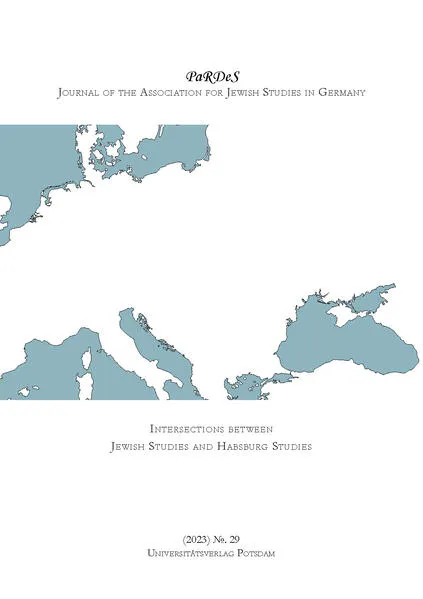
Anne Julia Hagen
The North Atlantic Treaty Organization and cross-cultural competence
- A wolf in sheep's clothing? Cross-cultural competence in NATO and its missions
ISBN: 978-3-869-56527-9
202 Seiten | € 13.50
Buch [Taschenbuch]
Erscheinungsdatum:
01.07.2022
Politik
Anne Julia Hagen
The North Atlantic Treaty Organization and cross-cultural competence
A wolf in sheep's clothing? Cross-cultural competence in NATO and its missions
This paper examines the function that cross-cultural competence (3C) has for NATO in a military context while focusing on two member states and their armed forces: the United States and Germany. Three dimensions were established to analyze 3C internally and externally: dimension A, dealing with 3C within the military organization; dimension B, focusing on 3C in a coalition environment/multicultural NATO contingent, for example while on a mission/training exercise abroad; and dimension C, covering 3C and NATO missions abroad with regard to interaction with the local population.
When developing the research design, the cultural studies-based theory of hegemony constructed by Antonio Gramsci was applied to a comprehensive document analysis of 3C coursework and regulations as well as official documents in order to establish a typification for cross-cultural competence.
As the result, 3C could be categorized as Type I – Ethical 3C, Type II – Hegemonic 3C, and Type III – Dominant 3C. Attributes were assigned according to each type. To validate the established typification, qualitative surveys were conducted with NATO (ACT), the U.S. Armed Forces (USCENTCOM), and the German Armed Forces (BMVg). These interviews validated the typification and revealed a varied approach to 3C in the established dimensions. It became evident that dimensions A and B indicated a prevalence of Type III, which greatly impacts the work atmosphere and effectiveness for NATO (ACT). In contrast, dimension C revealed the use of postcolonial mechanisms by NATO forces, such as applying one’s value systems to other cultures and having the appearance of an occupying force when 3C is not applied (Type I-II). In general, the function of each 3C type in the various dimensions could be determined.
In addition, a comparative study of the document analysis and the qualitative surveys resulted in a canon for culture-general skills. Regarding the determined lack of coherence in 3C correlating with a demonstrably negative impact on effectiveness and efficiency as well as interoperability, a NATO standard in the form of a standardization agreement (STANAG) was suggested based on the aforementioned findings, with a focus on: empathy, cross-cultural awareness, communication skills (including active listening), flexibility and adaptability, and interest. Moreover, tolerance of ambiguity and teachability, patience, observation skills, and perspective-taking could be considered significant. Suspending judgment and respect are also relevant skills here.
At the same time, the document analysis also revealed a lack of coherency and consistency in 3C education and interorganizational alignment. In particular, the documents examined for the U.S. Forces indicated divergent approaches. Furthermore, the interview analysis disclosed a large discrepancy in part between doctrine and actual implementation with regard to the NATO Forces.
When developing the research design, the cultural studies-based theory of hegemony constructed by Antonio Gramsci was applied to a comprehensive document analysis of 3C coursework and regulations as well as official documents in order to establish a typification for cross-cultural competence.
As the result, 3C could be categorized as Type I – Ethical 3C, Type II – Hegemonic 3C, and Type III – Dominant 3C. Attributes were assigned according to each type. To validate the established typification, qualitative surveys were conducted with NATO (ACT), the U.S. Armed Forces (USCENTCOM), and the German Armed Forces (BMVg). These interviews validated the typification and revealed a varied approach to 3C in the established dimensions. It became evident that dimensions A and B indicated a prevalence of Type III, which greatly impacts the work atmosphere and effectiveness for NATO (ACT). In contrast, dimension C revealed the use of postcolonial mechanisms by NATO forces, such as applying one’s value systems to other cultures and having the appearance of an occupying force when 3C is not applied (Type I-II). In general, the function of each 3C type in the various dimensions could be determined.
In addition, a comparative study of the document analysis and the qualitative surveys resulted in a canon for culture-general skills. Regarding the determined lack of coherence in 3C correlating with a demonstrably negative impact on effectiveness and efficiency as well as interoperability, a NATO standard in the form of a standardization agreement (STANAG) was suggested based on the aforementioned findings, with a focus on: empathy, cross-cultural awareness, communication skills (including active listening), flexibility and adaptability, and interest. Moreover, tolerance of ambiguity and teachability, patience, observation skills, and perspective-taking could be considered significant. Suspending judgment and respect are also relevant skills here.
At the same time, the document analysis also revealed a lack of coherency and consistency in 3C education and interorganizational alignment. In particular, the documents examined for the U.S. Forces indicated divergent approaches. Furthermore, the interview analysis disclosed a large discrepancy in part between doctrine and actual implementation with regard to the NATO Forces.
Unterstütze den lokalen Buchhandel
Nutze die PLZ-Suche um einen Buchhändler in Deiner Nähe zu finden.
Bestelle dieses Buch im Internet
| Veröffentlichung: | 01.07.2022 |
| Höhe/Breite/Gewicht | H 21 cm / B 14,8 cm / 344 g |
| Seiten | 202 |
| Art des Mediums | Buch [Taschenbuch] |
| Preis DE | EUR 13.50 |
| Preis AT | EUR 13.90 |
| ISBN-13 | 978-3-869-56527-9 |
| ISBN-10 | 3869565276 |
Diesen Artikel teilen
0 Kommentar zu diesem Buch
.... weitere Publikationen von Universitätsverlag Potsdam
Leserunde
WORDS TO THINK. OR TO SING. (English Edition) - An award-winning book of accessible, poetic pop lyric fragments in the making. (Poetische, gut zugängliche, englische Sprache)
Bewerbungsfrist bis zum: 29.12.2025


















